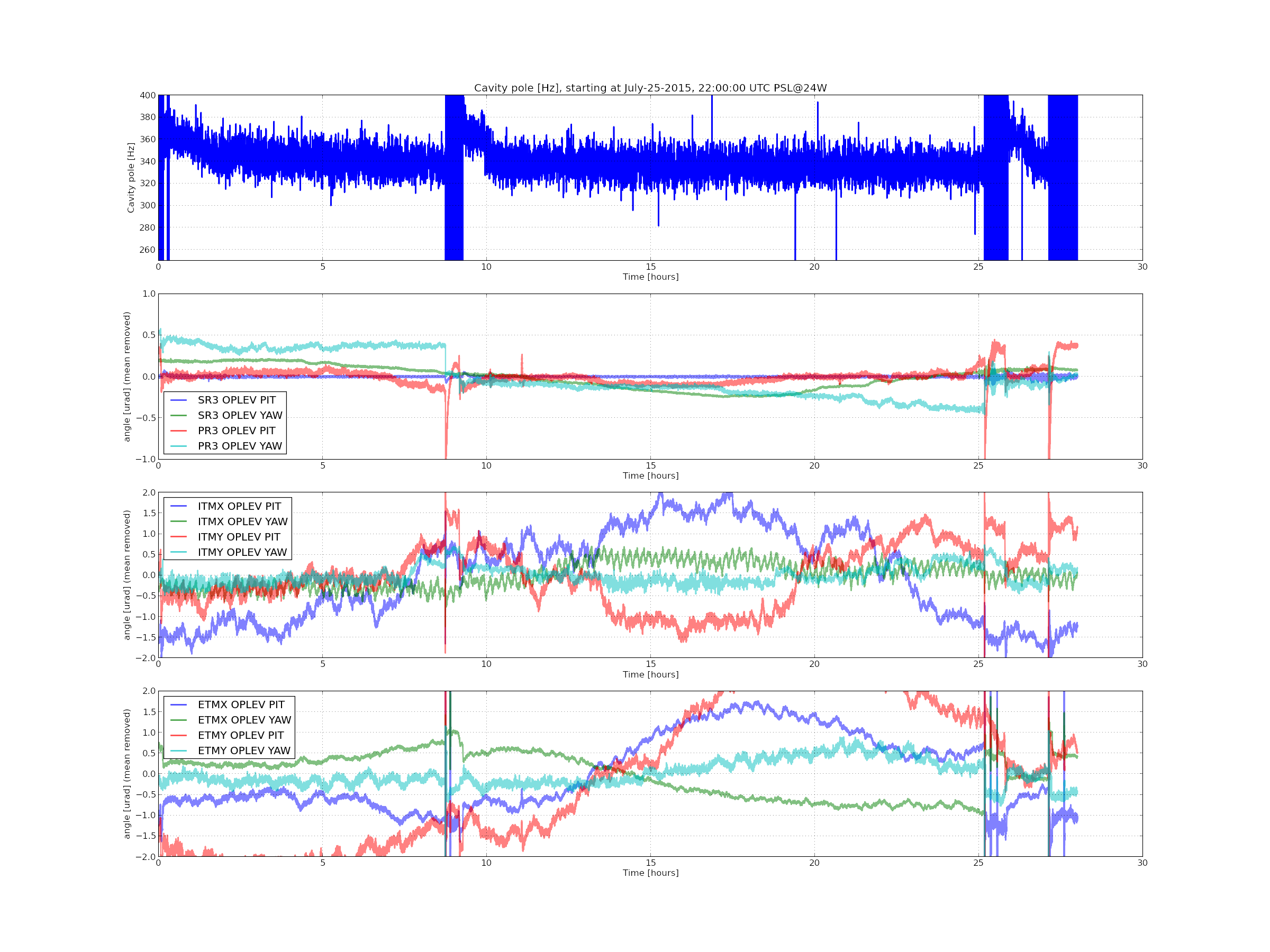I happened to witness the lock loss after 16h. We had several PRM saturations spread over ~8 minutes, before one of them took down the interferometer.
Here are some cavity pole data using a Pcal line (see alog 19852 for some details):
The data is 28 hours-long and contains three lock stretches, the first one lasted for 9-ish hours, the second about 16 hours (as Stefan reported above) and the third one 2 hours. As shown in the plot, the frequency of the cavity pole was stable on a time scale of more than 2 hours. It does not show obvious drift on such a time scale. This is good. However, on the other hand, as the interferometer gets heated up, the frequency of the cavity pole drops by approximately 40 Hz at the beginning of every lock. This is a known behavior (see for example alog 18500 ). I do not see clear coherence of the cavity pole with the oplev signals as oppose to the previous measurement (alog 19907) presumably due to a better interferometer stability.
Darkhan is planning to perform more accurate and thorough study of the Pcal line for these parcitular lock stretches.
As a test, you could inject a few lines in this neighborhood to see if instead of cavity pole drift (which seems like it would take a big change in the arm loss) its instead SRC detuning changing the phase. With one line only, these two effects probably cannot be distinguished.
Rana,
It sounds an interesting idea. I need to think a little bit more about it, but looking at a plot in my old alog (17876), having additional lines at around 100-ish Hz and 500 Hz may suffice to resolve the SRC detuning. Although it would be very difficult if the detuning turns out to be small because it would look like almost a moving cavity pole with a small detuning. I will try checking it with high frequency Pcal lines at around 550 Hz for these lock stretches. /* by the way I disabled them today -- alog 19973 */
In addition to the time series that I posted, I made another time series plot with the corner HWSs. This was a part of the effort to see impacts of the thermal transient on the DARM cavity pole frequency.
There seems to be a correlation between the spherical power of ITMY and the cavity pole in the first two-ish hours or so of every lock stretch. However, one thing which makes me suspicisous is that the time constant of the spherical power seems a bit shorter than the one for the cavity pole and also the arm powers -- see the plot shown below. I don't have a good explanation for it right now.
Unfortunately the data from ITMX HWS did not look healthy (i.e. the spherical power suspiciousely stayed at a high value regardless of the interferometer state) and that's why I did not plot it. Additionally, the ITMY data did not actually look great either since it showed a suspiciously quiet time starting at around t=3 hours and came back to a very different value at around t=5.5 hours or so. I am checking with Elli and Nutsinee about the health of the HWSs.




